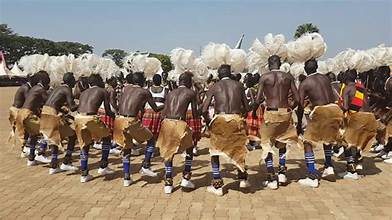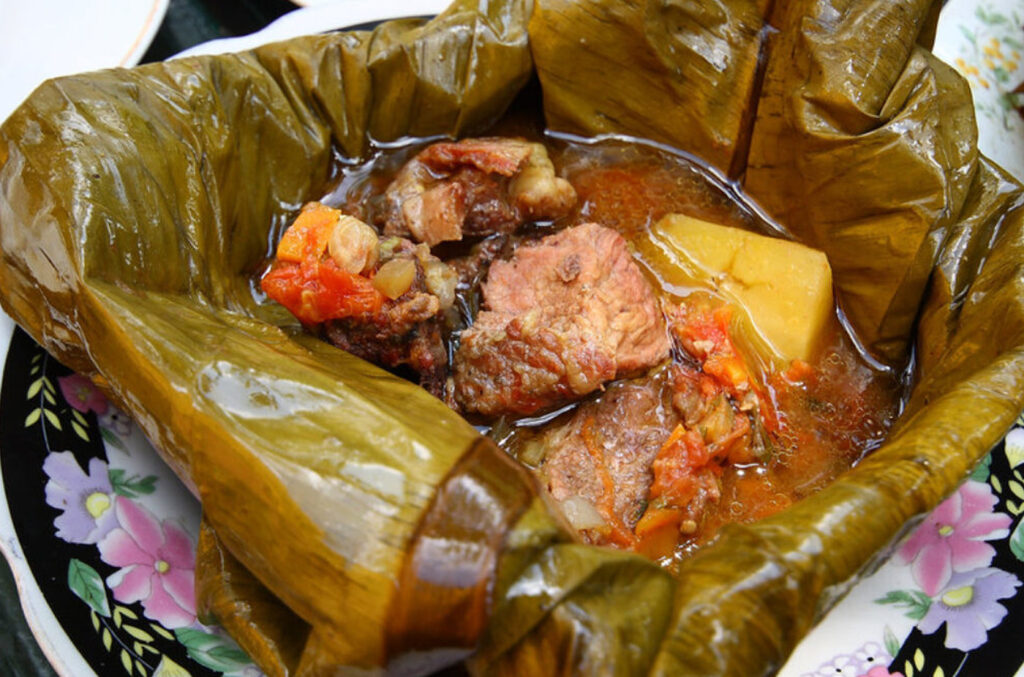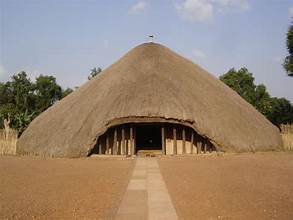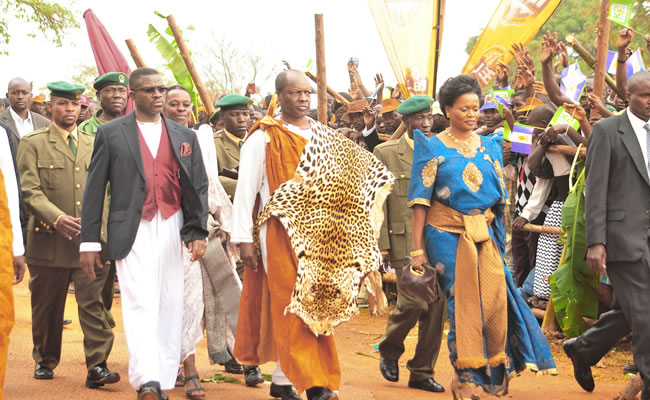Embark on a captivating journey through the vibrant tapestry of Uganda’s cultural heritage, where colorful traditions and rich history intersect to create a truly awe-inspiring experience. From the majestic landscapes to the warm and welcoming people, Uganda is a country that invites you to explore its diverse cultural treasures.
Immerse yourself in the pulsating beat of traditional music and dance, celebrated by locals in colorful attire adorned with unique patterns. Witness the rhythmic movements of performers as they bring ancient stories to life, passing down their heritage through generations.
Discover the fascinating folklore and oral traditions that have shaped Ugandan society for centuries. From tales of mythical creatures to legends of heroic warriors, these stories add depth to the cultural tapestry of the country.
Explore the vibrant local markets, where spices, textiles, and crafts tell the stories of skilled artisans. Each piece carries a narrative, connecting you to the cultural and artistic traditions of Uganda.
Unveil the beauty of Uganda’s cultural heritage as you journey through its diverse landscapes, vibrant traditions, and heartwarming communities. This is a country where every step reveals a new layer of history, waiting to be discovered.
Traditional dances and music of Uganda
Uganda’s traditional dances and music are an integral part of the country’s cultural heritage. The rhythmic beats and energetic movements of these performances are captivating, reflecting the vibrant spirit of the Ugandan people. Each dance has its own unique story to tell, often portraying historical events, rites of passage, or celebrating important milestones.
One of the most renowned dances in Uganda is the Bwola, which originated from the Acholi tribe. The dancers, adorned in colorful attire, perform intricate footwork and rhythmic jumps to the beat of traditional drums. The Bwola dance is a symbol of unity and celebration, often performed during weddings, cultural festivals, and other special occasions.

The Buganda Kingdom, the dominant tribe in Uganda boasts a rich cultural heritage. This includes its famous traditional dance known as “Muwogola.” This dynamic and vibrant dance form is an integral part of Buganda’s cultural identity. It is often performed during special ceremonies, festivals, and celebrations. Muwogola is characterized by its rhythmic drumming, intricate footwork, and colorful attire adorned with beads and feathers. Dancers, adorned in traditional attire, move in synchronized steps, expressing themes of unity, pride, and storytelling through their movements. The dance not only entertains but also serves as a means of preserving Buganda’s history and traditions. It captivates audiences with its energy and cultural significance.
Another popular dance is the “Imbalu.” From the Bagisu tribe.
This tribe is nestled in the eastern part of Uganda. It showcases its vibrant cultural heritage through the “Imbalu.” This dance is intimately connected to the rite of passage ceremony where young men undergo circumcision as a symbol of maturity and transition to adulthood. Imbalu dance is characterized by energetic movements, rhythmic drumming, and vibrant costumes adorned with beads and traditional regalia. Dancers skillfully perform intricate steps, reflecting the community’s values of bravery, unity, and resilience. The dance serves as a significant cultural expression. Preserving the Bagisu tribe’s traditions and celebrating their unique identity within Uganda’s diverse cultural tapestry.
Uganda’s traditional music is just as diverse and enchanting as its dances. The country is known for its wide array of musical instruments. These include drums, xylophones, and stringed instruments like the adungu and akogo. These instruments produce melodic tunes that accompany the dances, creating a harmonious and captivating experience.
Traditional clothing and fashion in Uganda
Traditional clothing and fashion are a reflection of Uganda’s cultural heritage and diversity. Each tribe has its own unique style of clothing, with vibrant colors, intricate patterns, and symbolic designs.
The Buganda tribe, for example, is known for its traditional attire called the gomesi. This elegant dress is made from colorful fabric, often with a patterned border and a sash tied around the waist. The gomesi is worn by women on special occasions such as weddings, cultural ceremonies, and important festivals.
In contrast, the Karamojong tribe embraces a more nomadic lifestyle, and their traditional clothing reflects this. Men often wear a simple loincloth, while women wrap themselves in brightly colored blankets and adorn their bodies with beadwork and jewelry. These traditional garments not only protect from the elements but also showcase the tribe’s unique identity and cultural practices.
Indigenous languages and literature in Uganda
Uganda is home to a rich variety of indigenous languages, each with its distinct characteristics and cultural significance. These languages play a vital role in preserving and promoting the country’s cultural heritage.
One of the most widely spoken indigenous languages in Uganda is Luganda, which is primarily spoken by the Baganda tribe. Luganda has a rich oral tradition, with stories and proverbs passed down through generations. Oral literature, such as folktales and myths, is an important part of Ugandan culture, providing insights into the beliefs, values, and history of the people.
In recent years, there has been a growing interest in preserving and documenting indigenous languages and literature in Uganda. Efforts are being made to record and transcribe oral stories, as well as promote literacy in indigenous languages. These initiatives are crucial in ensuring the survival and celebration of Uganda’s diverse linguistic heritage.
Traditional arts and crafts in Uganda
Traditional arts and crafts are a testament to the country’s rich cultural heritage and artistic traditions. Skilled artisans create intricate works of art using locally sourced materials, showcasing their creativity and craftsmanship.
Basket weaving is a popular traditional craft in Uganda, with each region having its unique style and technique. The baskets are often made from natural fibers such as raffia or banana leaves and are used for storage, carrying goods, or as decorative items. The intricate patterns and vibrant colors of these baskets reflect the cultural identity of the communities that produce them.
Wood carving is another traditional art form in Uganda, with artisans using their skills to create intricate sculptures, masks, and figurines. These carvings often depict animals, mythical creatures, or scenes from everyday life, and are highly valued for their cultural and artistic significance.
Cuisine and traditional food in Uganda
The cuisine is a delicious blend of flavors, spices, and cooking techniques, influenced by the country’s diverse cultural heritage. Staple foods include matooke (a type of green banana), cassava, sweet potatoes, and millet.
One of the most popular dishes in Uganda is the luwombo, which consists of meat, fish, or vegetables cooked in banana leaves with a rich sauce made from groundnuts, tomatoes, onions, and spices. The slow cooking process allows the flavors to meld together, resulting in a mouthwatering and aromatic dish.

Uganda is known for its street food culture, with vendors selling a variety of snacks and delicacies. One such snack is the infamous rolex, a popular street food that consists of a rolled-up omelet filled with vegetables and sometimes meat, all wrapped in a chapati (flatbread). The rolex is a delicious and convenient snack that is easily enjoyed on the go.
Festivals and celebrations in Uganda
Festivals and celebrations are a vibrant expression of Uganda’s cultural heritage and community spirit. These events bring people together to celebrate, honor traditions, and showcase the country’s diverse cultural tapestry.
The most famous festival in Uganda is the Nyege Nyege International Music Festival, held annually in Jinja. This four-day event celebrates African music and culture, featuring live performances by local and international artists. The festival attracts music enthusiasts from around the world, offering a unique opportunity to experience the rich musical traditions of Uganda.
Other notable festivals include the Imbalu Festival, celebrated by the Bagisu tribe to mark the initiation of boys into manhood, and the Bayimba International Festival of Music and Arts which stands as a beacon of cultural celebration and artistic expression in Uganda. This annual event, held in Kampala, brings together artists, musicians, performers, and art enthusiasts from across Uganda and beyond. With a diverse lineup of performances ranging from music concerts to dance showcases, theater productions, visual arts exhibitions, and workshops, Bayimba fosters creativity, innovation, and collaboration within Uganda’s vibrant arts scene. Beyond entertainment, the festival serves as a platform for cultural exchange, dialogue, and social engagement, empowering local artists and promoting the appreciation of Ugandan arts and culture both nationally and internationally. Through its dynamic programming and inclusive atmosphere, Bayimba continues to inspire and unite communities while nurturing the growth and sustainability of Uganda’s artistic landscape.
These festivals are a vibrant display of traditional music, dance, and rituals, providing a glimpse into the cultural practices and beliefs of the Ugandan people.
Cultural sites and landmarks in Uganda
Uganda is home to a wealth of cultural sites and landmarks that showcase its rich history and cultural heritage. From ancient kingdoms to colonial architecture, these sites provide a window into Uganda’s past.
The Kasubi Tombs, located in Kampala is a UNESCO World Heritage Site and is considered sacred to the Buganda people. These tombs serve as the final resting place for the Buganda kings and are an important cultural and spiritual site.

Another notable landmark is the Uganda Museum, which houses a vast collection of artifacts, art, and historical exhibits that highlight the country’s cultural diversity. Visitors can explore the museum’s various galleries, learning about the different tribes, their traditions, and the history of Uganda.
Preserving and promoting Uganda’s cultural heritage
Preserving and promoting Uganda’s cultural heritage is crucial for maintaining the country’s vibrant tapestry of traditions and history. Efforts should be made to safeguard cultural sites, support local artisans, and promote cultural tourism.
Government initiatives, such as the Ministry of Gender, Labor, and Social Development’s Cultural Institutions Act, aim to protect and promote the cultural rights of different tribes and communities in Uganda. These efforts include providing financial support for cultural events, festivals, and heritage sites.
Non-governmental organizations, such as the Uganda National Cultural Center, work towards preserving and promoting Uganda’s cultural heritage through various programs and initiatives. These organizations collaborate with local communities, artists, and scholars to document and share cultural practices, ensuring their continuity for future generations.
Conclusion: Embracing Uganda’s vibrant cultural tapestry
Exploring Uganda’s rich cultural heritage is amazingly adventurous. One can’t help but be amazed by the country’s diverse blend of traditions, arts, music, and cuisine. From the captivating rhythms of traditional dances to the intricate crafts of local artisans, Uganda’s cultural heritage is a wealth of treasures waiting to be discovered and celebrated.
By preserving and embracing this heritage, Uganda not only pays homage to its past but also creates opportunities for cultural exchange and understanding. With festivals, art exhibitions, and community initiatives, Uganda continues to showcase its cultural richness to the world.
So why not pack your bags and embark on a journey that will take you through the colorful landscapes, vibrant traditions, and heartwarming communities of Uganda? Discover the beauty of the country’s cultural heritage and let it leave an unforgettable impression on your soul. Uganda eagerly awaits, ready to share its stories, traditions, and hospitality with open arms. Contact us at [email protected] and let us tailor your unique journey to exploring the vibrant culture of Uganda.


Pingback: What To Do On A Uganda Safari: 10 Activities To Do – Sun Africa Expeditions